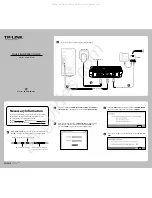
Chapter 13
Unicast and Multicast Routing
RUGGEDCOM ROX II
CLI User Guide
592
PIM-SM Concepts
•
Section 13.14.9, “Managing Multicast Group Prefixes”
Section 13.14.1
PIM-SM Concepts
When a PIM router receives a subscription from a host, e.g. Host A, for particular multicast traffic, the directly
attached designated router (DR) sends a PIM join message for this multicast group towards the rendezvous point
(RP). The message is sent hop-by-hop and thus any routers encountering the message would register the group
and send the message onwards towards the RP. This would create the shared tree (RP-tree). The tree will not be
complete, however, until any sources appear.
When a host or device sends multicast traffic destined to the multicast group subscribed by A, the directly
attached designated router takes the traffic, encapsulates it with PIM Register headers and unicasts them to
the RP. When the RP receives this traffic, it decapsulates the packets and sends the data towards the subscriber
through the RP tree. The routers that receive these packets simply pass them on over the RP-Tree until it reaches
the subscriber. Note that there may be other subscribers in the network and the path to those subscribers from
the RP is also part of the RP Tree.
After the shared tree has been established, the traffic flows from the source to the RP to the receiver. There
are two inefficiencies in this process. One, the traffic is encapsulated at the source and decapsulated at the RP,
which may be a performance penalty for a high level of traffic. Two, the traffic may be taking a longer path than
necessary to reach its receivers.
After the shared tree has been established, the RP may choose to to send a Join message to the source declaring
that it only wants traffic for a group (e.g. group G) from the source (e.g. source S). The DR for the source then
starts sending the traffic in multicast form (instead of unicast). Without encapsulation, there is little performance
overhead other than what is normal for the traffic when routing in general. The RP will continue sending the
traffic over the RP-tree after it receives it. This also means that the traffic may reach the RP-tree before it reaches
the RP (in the case where the source branches off the RP-tree itself) which will also have the additional benefit of
traffic flowing more efficiently towards receivers that are on the same side of the RP-tree as the source.
If the DR to the receiver decided that traffic coming from the RP-tree was using a suboptimal path than if it was
received from the source itself, it would issue a source-specific Join message towards the source. This would then
make all intermediate routers register the Join message and then traffic would start flowing along that tree. This
is the shortest path tree (SP-tree). At this point, the receiver would receive the traffic from both the RP-tree and
the SP-tree. After the flow starts from the SP-tree, the DR will drop the packets from the RP-tree and send a prune
message for that traffic towards the RP. This will stop the traffic from arriving from the RP. This scenario will most
likely only occur when the traffic has to take a detour when arriving from the RP. Otherwise the RP-tree itself is
used.
Section 13.14.2
Viewing the Status of PIM-SM
To view the status of PIM-SM, do the following:
1. Make sure the CLI is in Configuration mode.
2. At the command prompt, type
show routing status pim-sm
and press
Enter
. The PIM-SM routing
status information appears:
Summary of Contents for RUGGEDCOM ROX II
Page 2: ...RUGGEDCOM ROX II CLI User Guide ii ...
Page 4: ...RUGGEDCOM ROX II CLI User Guide iv ...
Page 39: ...RUGGEDCOM ROX II CLI User Guide Table of Contents xxxix 19 5 VLANs 752 ...
Page 40: ...Table of Contents RUGGEDCOM ROX II CLI User Guide xl ...
Page 46: ...Preface RUGGEDCOM ROX II CLI User Guide xlvi Customer Support ...
Page 170: ...Chapter 5 System Administration RUGGEDCOM ROX II CLI User Guide 124 Deleting a Scheduled Job ...
Page 256: ...Chapter 6 Security RUGGEDCOM ROX II CLI User Guide 210 Enabling Disabling a Firewall ...
Page 402: ...Chapter 11 Wireless RUGGEDCOM ROX II CLI User Guide 356 Managing Cellular Modem Profiles ...
















































